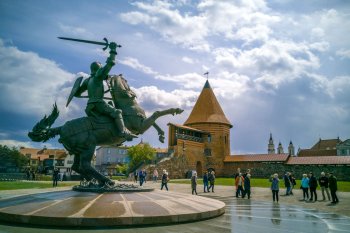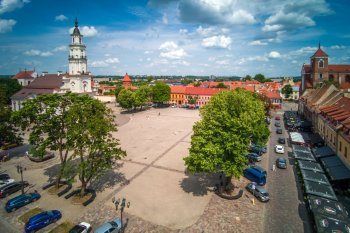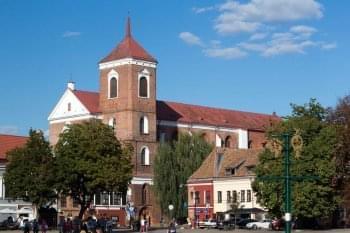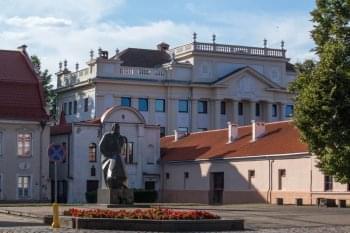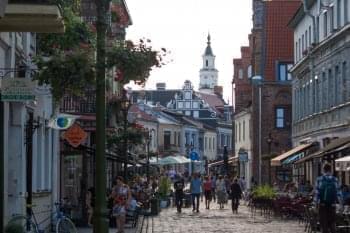Full day tour to Kaunas
Kaunas is the second largest city in Lithuania, first mentioned in Wigand of Marburg Chronicle in 1361. It is situated in the valley of confluence of two longest rivers of Lithuania: Nemunas and Neris. The town itself became an example of a confluence of people and cultures, an attractive blend of architecture and nature. The town has seen many ups and downs, but has stayed the source of forces for resistance, the guard of national identity, and has been temporary capital of Lithuania in 1919-1939. Development of Kaunas during this period had produced distinctive modernism architecture that was included into UNESCO World Heritage List. There are 48 public and private constructions preserved from that times.
The tour includes the Old Town of Kaunas with St. George's Church, Kaunas Castle built at the confluence of Nemunas and Neris rivers, the courtyard of the Theological seminary, the Town Hall Square surrounded by former 16th - 18th-century merchants' dwelling houses and baroque churches - the Jesuit Church and the Cathedral, the Church of Vytautas dating back to the 14th century and the Perkunas (Thunder) House (no visits inside); a walk on the central street - Liberty avenue – bustling with street vendors, musicians, full of cafes and souvenir shops; afternoon visits include Čiurlionis Picture Gallery and Devils' Museum.
M.K. Čiurlionis Picture Gallery preserves and exhibits the works of the famous Lithuanian artist, Mikalojus Konstantinas Čiurlionis, who painted and composed music at the turn of the 20th century.
Devils' Museum contains a collection of sculptures and carvings of devils collected by Lithuanian painter Antanas Zmuidzinavicius. His private collection started the Museum, which now houses several thousand devil figurines - the local ones and brought from all over the world.
Optional:
• Pazaislis Monastery
Located in splendid isolation among the fields and woodlands of the right bank of Nemunas river is a striking Baroque ensemble in Northern Europe founded in 1662 by the Great Chancellor Krzysztof Zygmunt Pac ordered by the Camaldolese Hermits. The main construction has been built in 1674 when the entire ensemble was finished in 1712. The building and the dome was founded after 1755 by king’s chamberlain Michal Jan Pac.
• The IX Fort Museum
A fortress dating 1882 and a death camp during the Nazi occupation, this structure currently houses a museum focusing both on extermination of Jews by the Nazi and deportations of Lithuanians by the Soviets.
